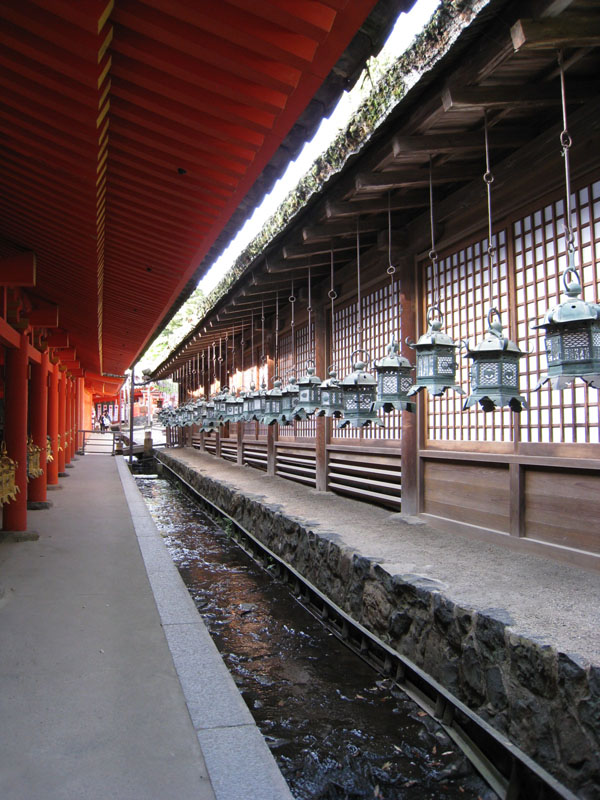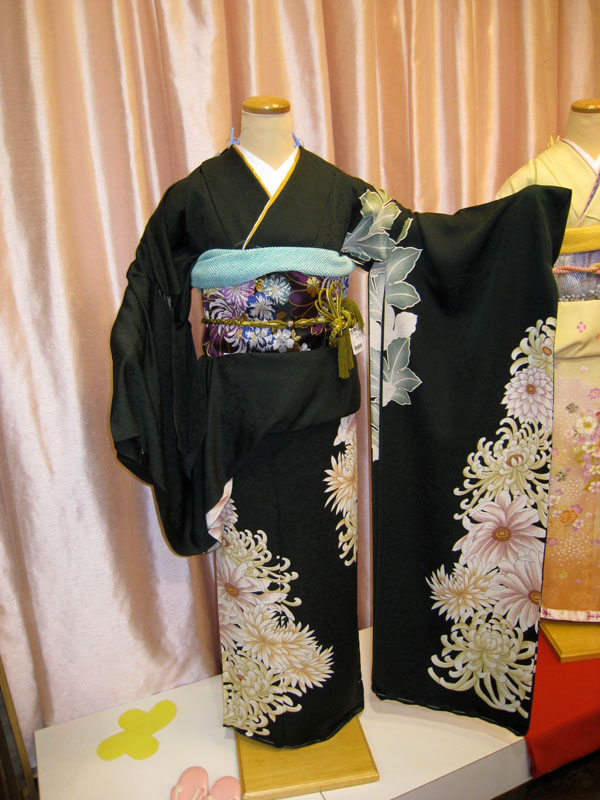When planning their trip to Japan, most people include Tokyo and Kyoto on their itinerary under the assumption that they will be covering the ever-fascinating contrast between new and old in Japan. While Tokyo is, indeed, a skyscraper jungle punctuated by odd little shops springing out from here and there, a heaven for techies who aspire to nothing more than getting lost in the streets of Akihabara, where all sorts of hi-tech toys, manga and anime characters compete for attention, Kyoto is often seen as a remnant of the “old ways” with its magnificent and abundant temples, cozy restaurants and kimono shops. Truth be told, both cities rely on a prevailing side to attract their visitors while discretely protecting their other faces. They both have a split-personality, like Japan itself: Tokyo is home to many beautiful places of the old times like the Asakusa district and the Imperial Palace and Kyoto’s main streets are bustling with fast cars and modern shopping malls.
One hour away from Kyoto lays the city of Nara, the first permanent capital of Japan, established in 710. Initially called Heijo, Nara became known as the center of Buddhist activities with its numerous monasteries and Chinese-influenced buildings, lending its name to an entire historical period of Japan. If a visitor truly wishes to witness the greatness of old Japan, Nara is one of the best places to go to.
Coming out of the main train station, there’s a variety of tight little streets waiting to tempt the visitor with old-style sweets shops, where sweets are made out of rice flour, filled with sweet red bean paste and mimicking peaches or tea leaves. Traditional sweets are still much appreciated although Western-style cakes and pastries have won over the young crowds. Nara’s narrow streets are, otherwise, filled with shops selling hand-crafted objects, kimonos, traditional Momiji dolls, beautiful hair pins and other decorative items, colorful umbrellas made out of special paper, everything a traditional art-loving customer would look for. They make a great authentic souvenir for the people back home or a well-received gift for a Japanese friend.
After slowly walking in history's footsteps, the visitor finally arrives in a glade full of green and…deer. Nara Park is famous for its roaming deer, always hungry for a deer-biscuit, shika senbei, happily sold by vendors all over the park. According to the legend, the god called Takemikazuchi arrived in Nara on a white deer which prompted the deer to be regarded as a “heavenly” animal and, thus, protected and cared for.
Feeding the “messengers of God” along the way makes for a fun stroll towards the largest wooden building in the world, the Todai-ji Temple, listed as an UNESCO World Heritage Site. Its huge dimensions may be accounted to hosting the largest Buddha statue in the world, Daibutsu for the Japanese. In front of the towering statue, visitors can burn osenko, incense believed to have healing powers. Inside the Great Buddha Hall, light can barely shine upon the statue. Filtered through the small windows, it lends a drop of gentleness even to the fearsome statues of the guardians watching over the temple and its surroundings. Enlightenment seems attainable, especially since there is a legend that passing through a hole in a supporting pillar, apparently the same size as one of Buddha’s nostrils, blesses the person in their next life.
You can find the rest of the story and more photos HERE.
Pentru restul articolului si pentru mai multe poze, va rog sa urmariti link-ul de mai sus. Multumesc! ^_^
Pentru restul articolului si pentru mai multe poze, va rog sa urmariti link-ul de mai sus. Multumesc! ^_^
















"one of Buddha's nostrils"... adică nara lui Buddha din Nara? :) n-am ştiut-o pe asta. şi nici pe altele. dar frumos, la Daibuţ.
RăspundețiȘtergereooo
RăspundețiȘtergeremai ai?!
astept
:)
Love to read your posts:) it's always interesting and fresh :)
RăspundețiȘtergere@Explorish: Nici eu n-am stiut cand am ajuns acolo ca exista o "nara a lui Buddha" prin care sa treci :)) Am observat stalpul si coada de copii care se formase in fata lui abia cand eram in toiul excursiei. Am citit placuta de pe stalpul de sustinere si apoi am mai citit si pe internet despre diverse legende. Asa fac intotdeauna, citesc inainte sa merg undeva si, cum mai gasesc o mie de chestii care ma fac curioasa, mai citesc si dupa :))
RăspundețiȘtergereMersi de vizita! :)
@Belle: Mai scriu! :) Pana acum am cam evitat sa scriu articole cu tinta turistica, insa scriindu-l pe acesta am descoperit ca-mi place, de fapt, sa povestesc ce se poate face intr-un loc al Japoniei din perspectiva cuiva care a stat mai mult decat un turist :)
Multumesc pentru vizita, o zi frumoasa! :)
@Lorenabr: Thank you! ^_^ *bow* I do my best to write interesting things but my "interesting" is not always most people's "interesting" :))) Thanks for reading my posts! :)
Hi there your web page url: http://www.blogger.com/comment.
RăspundețiȘtergereg?blogID=415293407932921042&postID=6205927604060638099 appears to be redirecting to a
completely different web-site when I click the home page link.
You may want to have this checked.
Here is my web page :: blog